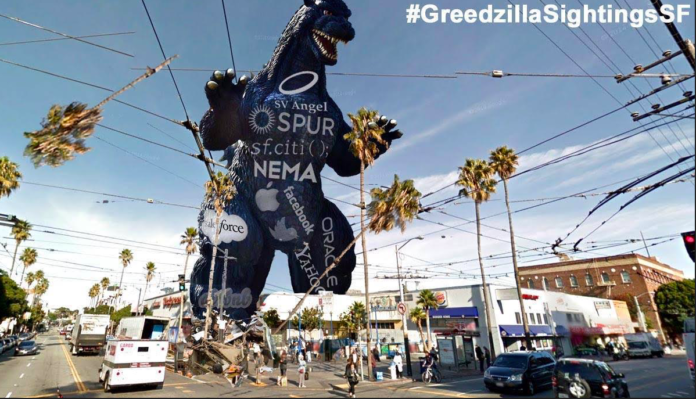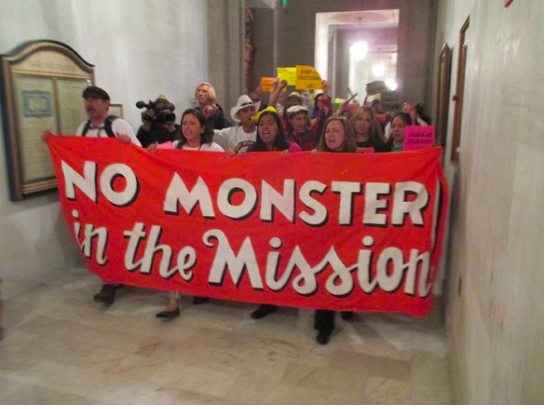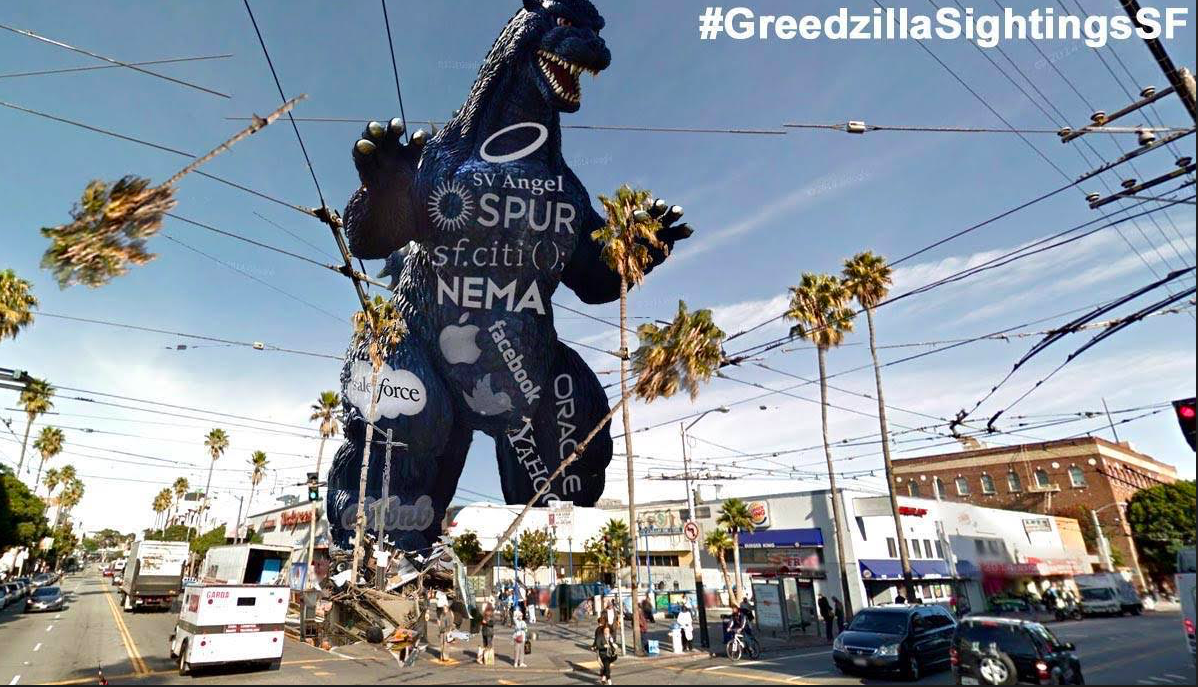
For years, as community leaders fought for affordable housing instead of luxury condos as 16thand Mission, the developer who owned the site said that was just impossible.
At meeting after meeting, representatives of Maximus Real Estate Partners said neither the city nor any nonprofit could get a chance to build housing at the edge of the BART plaza; the site, they said, “is not for sale.”

Well, according to the Business Times today, the site is for sale:
Multiple requests for comment made to the project’s developer, Maximus Real Estate Partners, were not returned, but a listing with real estate firm Colliers International markets the 58,000-square-foot, multi-tenant retail complex and rear parking lot as an “opportunity to entitle and construct a new, ‘large-scale’ mixed-use residential housing project.”
Laura Waxman at The BizTimes reports that the investors in the project “forced the hand” of Maximus because of the intense community opposition to the Monster in the Mission.
That doesn’t mean the site will be instantly available for 100 percent affordable housing – but there could be a much different transit-centered project down the road.
“We are putting together different scenarios to see what the community wants and would be happy with,” Sup. Hillary Ronen, who represents the Mission, told me. “When the community has a voice, we will look to see what we can do.”
It won’t be cheap. Maximus bought the property in 2016 for $41 million, public records show. But the value of the site was based in part on its potential for large-scale development – and if community opposition makes that impossible, the price could drop significantly.

In other words, if the city isn’t going to allow several hundred high-end condos on the site, the investors could demand that Maximus unload it at the price the developer paid or less.
Help us save local journalism!
Every tax-deductible donation helps us grow to cover the issues that mean the most to our community. Become a 48 Hills Hero and support the only daily progressive news source in the Bay Area.
Real-estate deals are driven these days by speculative capital, and the people who put up the money at times just want out. Maximus would likely have to find other investors to bail out the original investors if it somehow wants to keep the site.
This is, or could be if things work out, a huge victory for the Mission and for neighborhood opposition to the displacement that comes with massive new market-rate housing.
It would also be a resounding message to the Yimbys who say that any opposition to market-rate housing is making the crisis worse.
Opposition to the Monster in the Mission was based on the very clear evidence that, in low-income neighborhoods and vulnerable communities, new luxury housing drives up surrounding land values and leads to displacement.
If that opposition turns out to have forced Maximus to abandon the project and sell it to a nonprofit that can build affordable housing, the city will get the benefit: No net displacement, and more housing for people who need it.
The argument against the Monster in the Mission never had anything to do with density; that’s a great site to build housing, even highrise, dense housing. It was all about making sure that the low-income people who live and work in the area aren’t forced out.
“We want a plan to build affordable housing, quickly,” Ronen told me. “We’re looking to see how to maximize affordable housing and see what’s possible.”
None of this is a sure thing. Maximus could still pull the property off the market and try again. (I have asked Maximus folks for comment, but haven’t heard back yet.) But at this point, it’s hard to imagine how the city is going to approve a luxury housing project on that site.
Instead, we might get real community-based planning: Instead of the Planning Department just responding to developer applications, the city could ask the people who live near 16th and Mission what they want, and use that as a starting point. How’s that for a radical idea?
